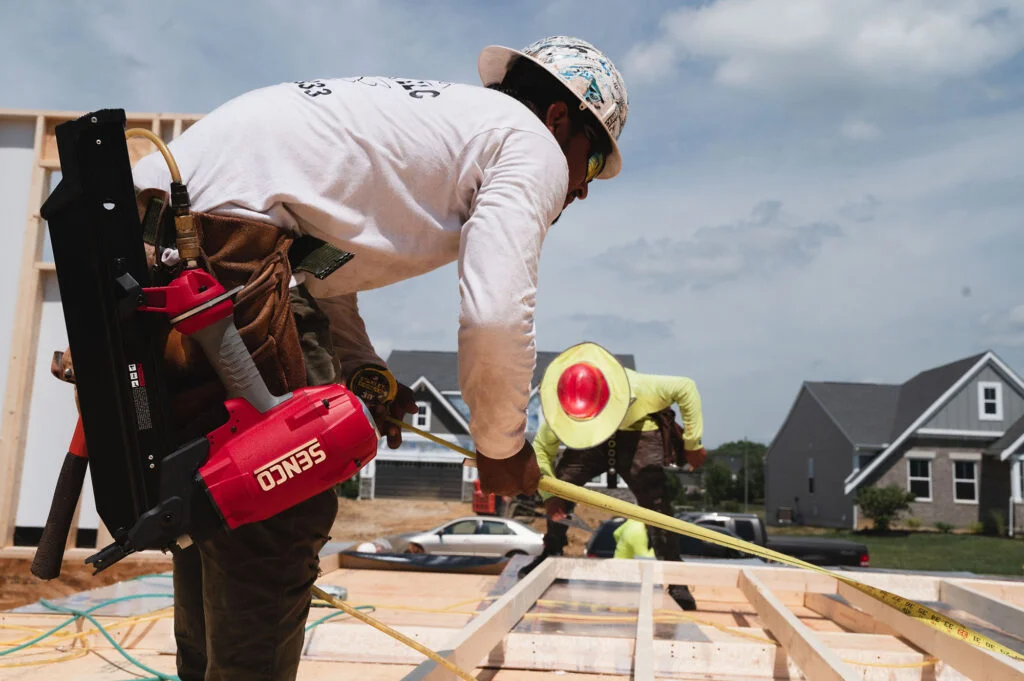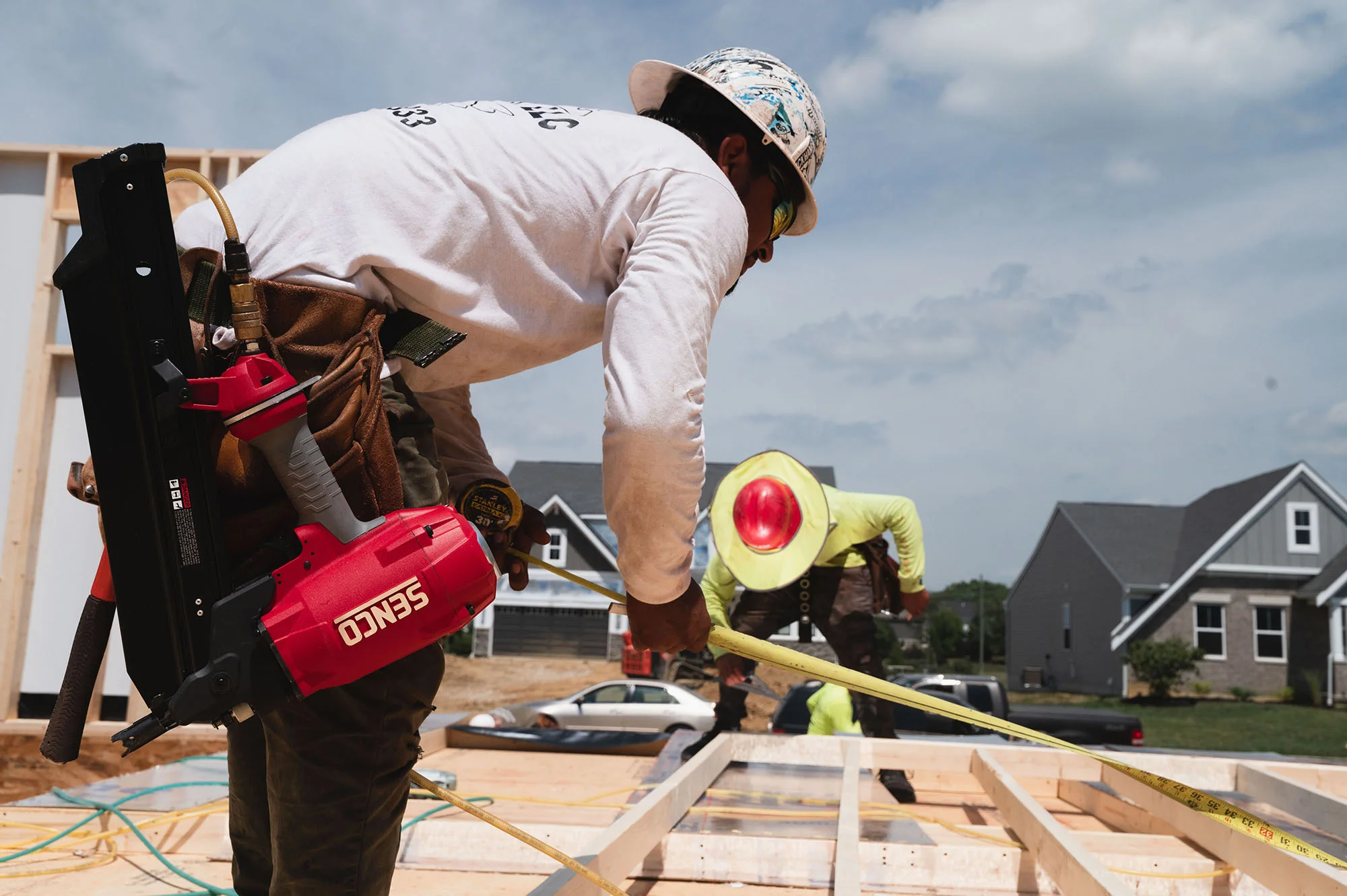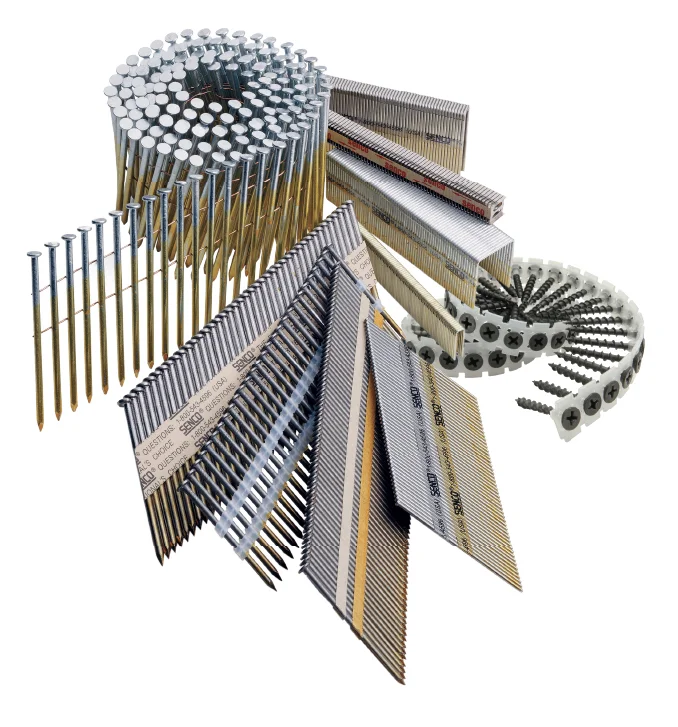Pneumatic Tool and Worksite Safety

Construction Safety and Pneumatic Tool Usage
Safety is priority when using pneumatic tools, whether for a DIY project or at a professional building site. From managing hoses to ladder safety, implementing comprehensive safety protocols is crucial to prevent accidents and injuries in the workplace. As this year’s construction season starts to ramp up for most of North America, take a moment to review SENCO’s safety tips for pneumatic tools and worksites.
Pneumatic Tools: Safety 101
- Read and understand all safety warnings on the tool, the tool box, and the fastener box.
- Read and understand all safety warning and instructions in the operators manual.
- Regularly inspect and perform routine maintenance of all tools.
- Pay attention to triggers, handles, and hoses for any wear or leaks.
- Implement safety measures including posting warning signs, setting up screens or shields, and ensuring clean and dry compressed air supply.
- Use only recommended attachments and minimize physical fatigue by using counterbalances for heavy tools.
- Keep tools clean and lubricated according to manufacturer recommendations to ensure optimal performance. Proper maintenance will not only keep you safe but will extend the lifespan of your tool.
- Never tamper with safety features or attempt to modify tools beyond their intended use. Tampering or modifying tools is dangerous and you risk voiding the manufacturer’s warranty.
- Questions about your tool? All SENCO manuals and specs are available on our website.
Hose Management
- Use hoses and fittings of the correct diameter and designed to resist abrasion, cutting, and crushing.
- Select air-supply hoses with a minimum working pressure rating of 1035 kPa (150 psig) or 150% of the maximum system pressure, whichever is higher.
- Regularly inspect hoses for cuts, bulges, and abrasions. Replace immediately if defective.
- Enhance air line safety by following an installation guide, conducting self-diagnostic checks, and incorporating an air fuse to prevent hose whiplash.
- Prior to connecting a tool, blow out the air line away from yourself and others, and ensure proper hose connections with mechanical securing mechanisms.
- Utilize an FRL (filter, regulator, lubricator) near the tool to adjust air pressure and enhance installation safety.
- Adhere to manufacturer’s pressure ratings, turn off air pressure when not in use or changing tools.
- Avoid carrying tools by hoses.
- Do not lay hoses across walkways.
- Do not use compressed air for cleaning, especially for cleaning your clothes, shoes, or person or on another person’s clothes, shoes, or body.
- All SENCO air compressors are included on our specs page if you have any questions.
Work Environment
- Assess the job environment for potential hazards such as noise levels, ventilation, confined spaces or working at heights and implement appropriate safety precautions.
- Ensure proper setup of the air line system and avoid trip hazards (see above).
- Prioritize stable operating positions and secure workpieces to prevent accidents, particularly when working at heights or conducting grinding operations that generate fine dust particles.
- Always maintain a clear workspace free from clutter and potential hazards.
Ladder Safety
- Prioritize safety around electrical hazards, avoiding metal ladders near power lines or energized equipment.
- Inspect ladders thoroughly before use. Do not use a damaged or unsafe ladder.
- Maintain three-point contact while climbing, positioning the body in the ladder’s center and facing it.
- Use ladders and accessories only for their intended purposes, ensuring they are free of slippery materials.
- Ensure ladders are placed on stable, level surfaces or secured to prevent displacement.
- Always refer to ladder manufacturer’s instructions/warnings.
Personal Protective Equipment (PPE)
- Utilize appropriate PPE when using pneumatic tools to mitigate injury risks.
- Safety glasses protect against flying debris.
- Utilize hearing protection to guard against noise.
- Gloves provide hand protection from sharp edges or high temperatures, and steel-toed boots offer foot protection.
- A hardhat or helmet may be appropriate if you are working at a height, if there is potential danger from falling or flying objects, or electrical shock.
Emergency Preparedness
- Despite meticulous precautions, accidents can still occur.
- Establish comprehensive emergency procedures ensures swift and effective responses.
- Train all personnel in first aid and CPR.
- Keep first aid kits readily accessible onsite.
- Implement protocols for reporting incidents.
- Conduct thorough investigations to identify causes and prevent future occurrences when an incident does occur.
- Regularly review and update emergency plans to adapt to evolving worksite conditions.
Conclusion
Safety is an ongoing commitment. Encourage team members to report hazards promptly and address concerns immediately. By regularly reviewing safety procedures, proper tool maintenance, and attention to your worksite’s overall environment, organizations can mitigate risks and create safer, more productive work environments for all personnel.

